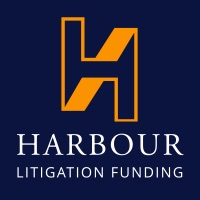11 April, 2018
Large businesses today operate in a challenging and uncertain environment. The geo-political landscape continues to shift in unpredictable ways with, for example, the political and economic rami cations of the Brexit vote and the Trump presidency still largely to play out. Stock markets have started to experience jitters following the second longest bull run in history, whilst growth in many economies and for many organisations stubbornly refuses to reach pre- nancial crisis levels.
Action and reaction
Transformation is occurring across all industries at an accelerating pace, whether driven by technology, transparency or changing customer preferences. Companies operate in a state of almost continual ux: new operating models, turnovers in leadership and new product bets are more frequent than before. To quote a Google executive, “change has never happened this fast before and will never be this slow again”.
This contributes to a complex – and often costly – risk environment for companies to manage. One reaction has been a doubling of the number of assurance functions across the last 10 years – such as Enterprise Risk Management, Compliance, Cyber-Security, and Data Privacy teams.
Another has been a reduction in risk appetite – research shows more than three quarters of leadership teams have become more risk averse when investing in new projects.
New approaches to risk
This has led to the proliferation of novel approaches taken by companies to mitigate risks. New risks, such as those surrounding data breaches and ransomware can now be partly managed, for example through cyber insurance. Companies face new challenges due to increasing transparency and heightened consumer expectations. On page 11 Coast describes future risks to the corporate reputation.
Companies are also looking at ever-present risks, and seeking new ways to mitigate them. For example, recent years have seen the adoption of financial hedging products or insurance in areas like business interruption. Companies also seek more external support to assist with previously internally performed tasks, such as supplier due diligence.
Litigation is another longstanding corporate concern, and part of the trend among executives looking to new ways to hedge their risks. In recent years at Harbour we have seen more and more large, well-resourced corporates utilise our funding to shift some or all the risk of an adverseoutcome in litigation or arbitration.
The impact of disputes
The struggle to nd sustained growth, ever- increasing business expenses and demands to deliver savings, means that corporate budgets remain tight. The risks inherent to even the most solid of claims are well understood. Whilst legal fees may be just a fraction of a large company’s total G&A expenses, it’s common for those costs to be allocated to an individual business unit or country budget, where the fees can have a signi cant impact.
For those local business leaders and finance directors, the cash spent pursuing claims may then not be available for other core business building activities. The impact becomes particularly personal for those who are measured on business performance or variance from a pre-agreed budget or target. Expenses for claims are unpredictable, last for several months or years, and come with no guarantee of a return – and sometimes the exact opposite in the case of an adverse costs award. As such, it’s not surprising that many CFOs tell us that lawyers’ fees are often a big topic of conversation at management meetings.
Litigation funding resolves these problems by offering corporates the opportunity to shift the entirety of this litigation risk on to a third party. It provides comfort to business managers who need to make the internal case to pursue a claim in today’s risk-averse environment, and offers a host of financial and reporting benefits, as set out in Grant Thornton’s article in more detail, from the improvement of operating profit and cash flow, to increasing the market value of a business that makes more efficient use of its capital.
Future trends
As we look ahead, there are many reasons to believe that the number of disputes involving corporates will increase. New, unpredictable and unfamiliar risks will emanate from investments in new technology and markets. With businesses having to move faster than ever before, new legal risks may go unnoticed – and unaddressed.
In addition, our decades of collective experience at Harbour tell us that economic, geopolitical and regulatory volatility are key drivers of dispute volumes. In this edition we shine the spotlight on two trends: shareholders class actions and the potential impact of Brexit on competition litigation. Recent years have already seen an increase in demand for litigation funding from well- capitalised corporates, as knowledge among executives about the availability and bene ts of funding has grown. If we are in fact looking at a future where the volume and risk attached to commercial litigation increases, with corporate leadership teams spending more time looking for risk management solutions, we can expect the pace of adoption of third party funding to accelerate even faster.
By Elliot Berger, Commercial Director, Harbour
For further information, please contact:
Ruth Stackpool-Moore, Director of Litigation Funding / Head of Harbour Hong Kong
ruth.sm@harbourlf.com





